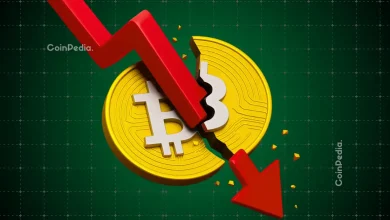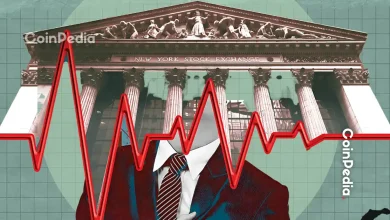
Market makers withdrew liquidity during the October 2025 crash, turning a correction into a $19B liquidation.
Auto-Deleveraging (ADL) forced profitable positions to close, amplifying losses across crypto markets.
The collapse exposed structural flaws in crypto market incentives, highlighting the need for safeguards.
The October 10-11 crypto crash wasn’t just another market shake-up.
A $19 billion liquidation wiped out leveraged positions across Bitcoin, Ethereum, and altcoins, leaving traders and exchanges reeling. The headline trigger was Trump’s 100% tariffs on Chinese imports.
But according to blockchain analyst and Mirror.xyz blogger YQ, the deeper story lies in how market makers – the players supposed to keep the market stable – vanished when they were needed most.
Market Makers: Lifelines That Disappeared
Market makers are meant to keep trading smooth. They provide liquidity, tighten spreads, and help prices stay orderly. In traditional finance, this usually works. Crypto is different. Markets never sleep, liquidity is scattered across hundreds of exchanges, and price swings can be extreme.
YQ’s breakdown shows how fast things unraveled. Between 20:40 and 21:20 UTC, market depth on tracked tokens fell from $1.2 million to just $27,000 – a 98% collapse.
Bitcoin dropped to $108K, and some altcoins lost 80% of their value.
“Market makers had 20-40 minutes of warning before complete withdrawal,” YQ notes. They pulled out in a coordinated way, returning only when the market offered a profitable re-entry.
ADL: When the Market Turns on Traders
With order books empty, exchanges relied on Auto-Deleveraging (ADL) to handle positions that couldn’t be closed normally. Binance, Bybit, and Hyperliquid triggered ADL for tens of thousands of accounts. The most profitable traders were hit first.
Hedge positions disappeared in minutes, open interest across the market fell by roughly 50%, and what looked like a stable portfolio became exposed in a heartbeat.
Why Market Makers Walked Away
YQ points to a clear structural problem. Market makers faced four incentives to pull out: high risk versus small spread profits, early knowledge of a long-biased market, no legal requirement to stay, and bigger profits from arbitrage.
The result was a vicious cycle: shock, withdrawal which led to depleted insurance funds, and more liquidations.
Lessons for the Market
“Voluntary liquidity provision fails precisely when involuntary provision is most needed,” YQ writes. The $19 billion wipeout, according to him, exposed a system where those meant to stabilize the market can profit more from chaos than from order.
Community reactions reflected the frustration. @JackyGekko asked,
“Why should market makers provide liquidity even when the market is so skewed to the long side…what kind of incentive can cover their losses?”
The answer is clear: until exchanges create proper safeguards, circuit breakers, and incentives, the next big crash will teach the same lesson.
This analysis is based on YQ’s insights. Stay tuned to Coinpedia for more in-depth breakdowns and expert perspectives.
Never Miss a Beat in the Crypto World!
Stay ahead with breaking news, expert analysis, and real-time updates on the latest trends in Bitcoin, altcoins, DeFi, NFTs, and more.
FAQs
The crash was triggered by new US tariffs, but a 98% collapse in market maker liquidity turned a sell-off into a $19 billion liquidation event, causing extreme price drops.
Market makers provide trading liquidity by setting buy/sell orders. Their coordinated withdrawal during the crash left order books empty, massively amplifying losses.
ADL is an exchange mechanism that automatically closes profitable traders’ positions to cover losses from liquidated traders when insurance funds are depleted.
The crash triggered approximately $19 billion in total liquidations after market makers withdrew liquidity, leading to a cascade of forced position closures.
Trust with CoinPedia:
CoinPedia has been delivering accurate and timely cryptocurrency and blockchain updates since 2017. All content is created by our expert panel of analysts and journalists, following strict Editorial Guidelines based on E-E-A-T (Experience, Expertise, Authoritativeness, Trustworthiness). Every article is fact-checked against reputable sources to ensure accuracy, transparency, and reliability. Our review policy guarantees unbiased evaluations when recommending exchanges, platforms, or tools. We strive to provide timely updates about everything crypto & blockchain, right from startups to industry majors.
Investment Disclaimer:
All opinions and insights shared represent the author's own views on current market conditions. Please do your own research before making investment decisions. Neither the writer nor the publication assumes responsibility for your financial choices.
Sponsored and Advertisements:
Sponsored content and affiliate links may appear on our site. Advertisements are marked clearly, and our editorial content remains entirely independent from our ad partners.

![XRP News [LIVE] Update](https://image.coinpedia.org/wp-content/uploads/2025/12/01124853/How-High-or-Low-Can-XRP-Price-Go-After-Fifth-ETF-Launch-Today-390x220.webp)





